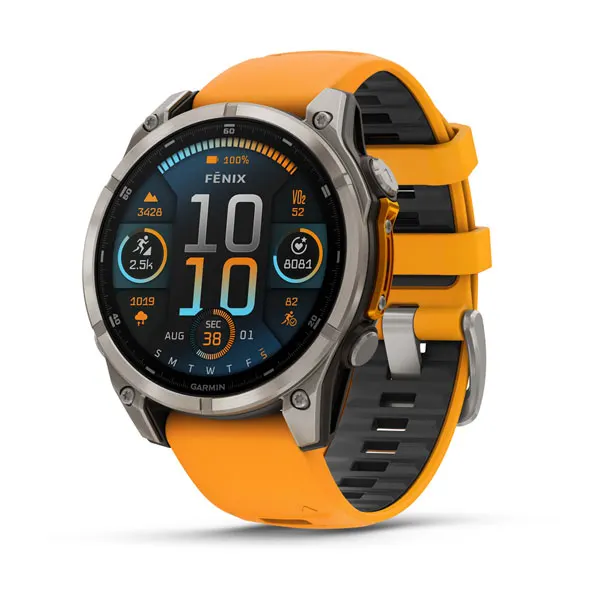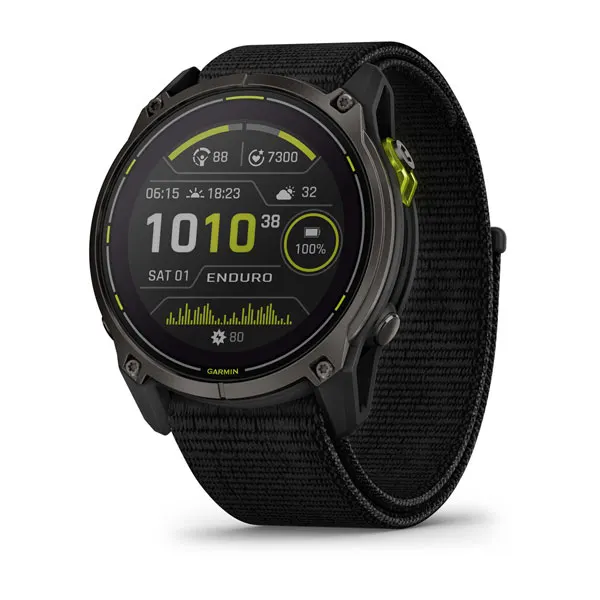The Garmin Fenix 8 and the Garmin Enduro 3 are tough, multisports watches that are built to go the distance when you do.
These watches give you pretty much the best that Garmin has to offer in tracking, training modes, analysis, and smartwatch features too. All while giving you the kind of battery life that wipes the floor with aspiring outdoor smartwatches like the Apple Watch Ultra 2 and the Samsung Galaxy Watch Ultra.
If you like the sound of the Fenix 8 and the Enduro 3, but can’t choose between the two, which should you go for? We’ve broken down the key differences between the two watches that will help you decide which is the best fit for you.
Garmin Fenix 8 vs Enduro 3: Price and availability
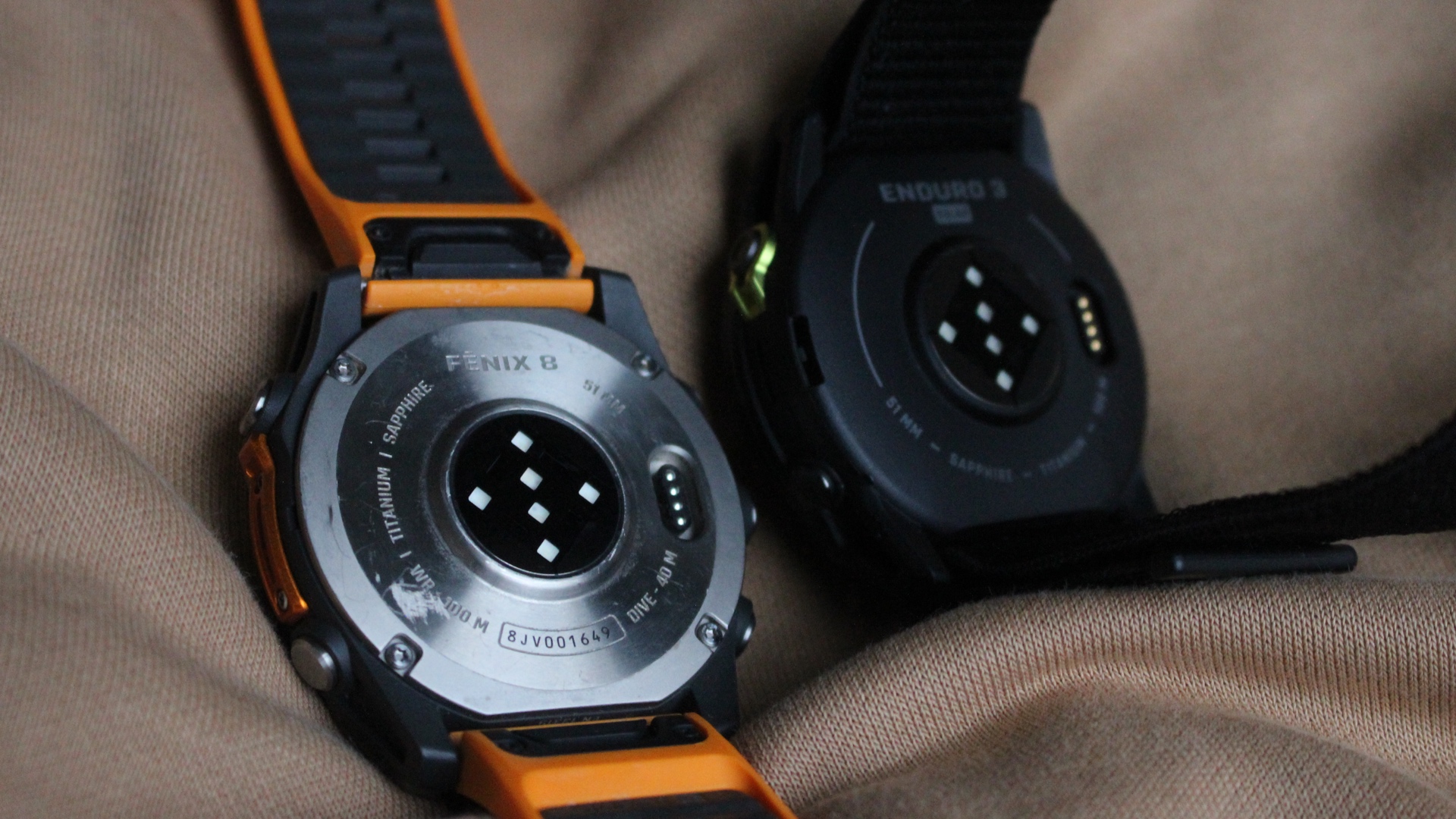
You likely know this already, but these two watches are expensive, so be prepared to shell out big money for them.
Both watches were launched at the same time in August 2024, with the Enduro 3 arriving in one size option just like previous Enduros. If you want an Enduro 3, you can expect to pay £769/$899/AUS $1,549 for it.
With the Fenix 8, there are multiple sizes and even display options (more on that below) with pricing starting at £949/$999. If you want the biggest Fenix 8 option, that can push the price over £1,000/$1,000.
The Enduro 3, while still an expensive watch, is the cheaper option by quite a significant amount.
Garmin Fenix 8 vs Enduro 3: Design and display
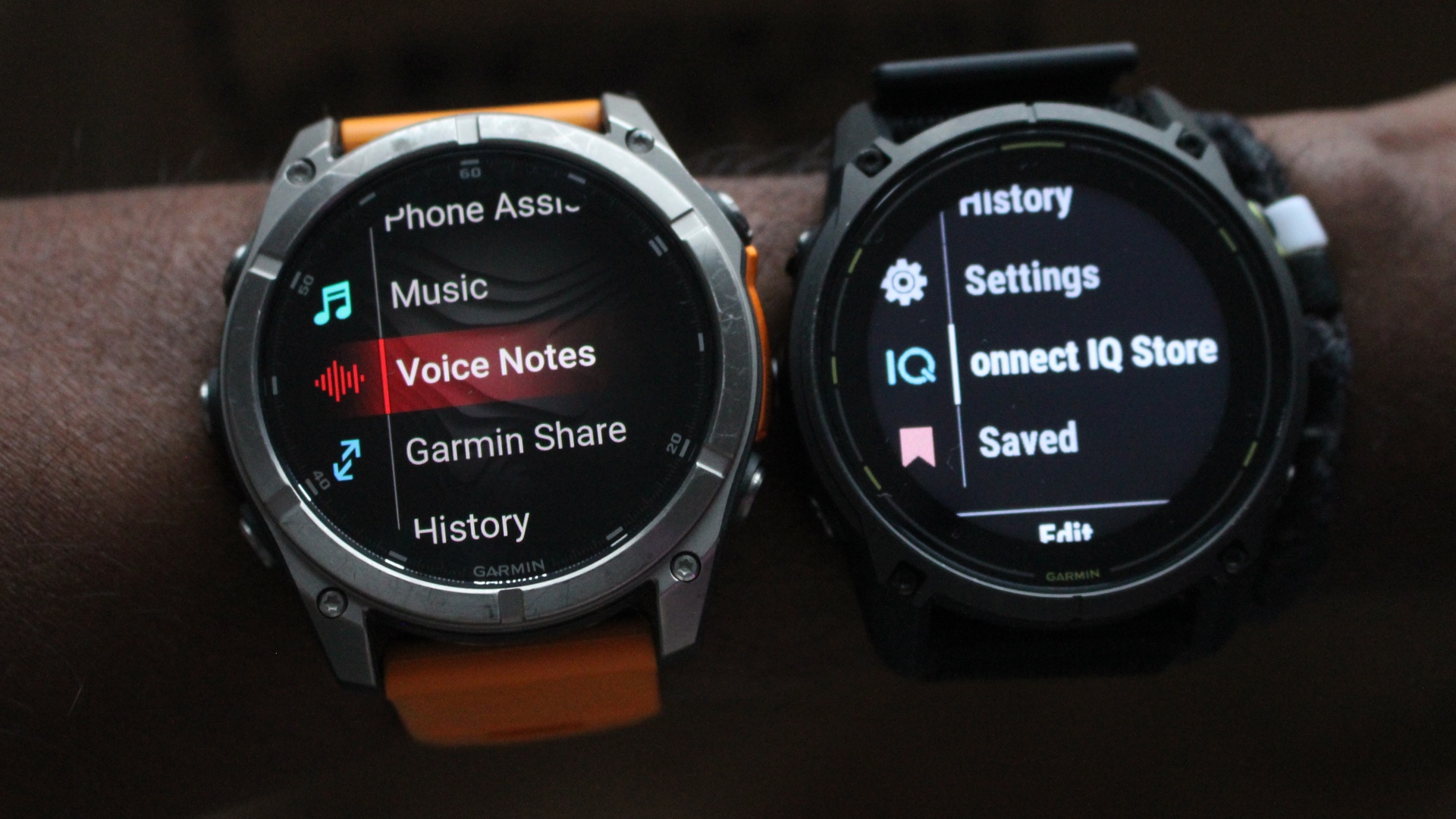
It’s easier to start with the Enduro 3, which as mentioned comes in just one model and size option. It’s got a 51mm polymer case, a titanium bezel, and is partnered up with a nylon strap. It includes a 1.4-inch, 280 x 280 transflective touchscreen display and features Garmin’s latest Power Sapphire lens, giving you an extra battery resource when you’ve exposed that lens to sufficient sunlight during the day.
With the Fenix 8, things get a bit more complicated. First off, you have the option of a Fenix with an AMOLED display or a transflective display with a Power Sapphire lens just like the Enduro 3. There are also more size options to choose from, with the Fenix 8 AMOLED available in 42mm, 47mm, and 51mm sizes. The Fenix 8 with a transflective, solar-powered display is available in 47mm and 51mm versions. That means you can get both Fenix 8 display models in the same size as the Enduro 3’s single case size.
Beyond size and display options, the Fenix 8 AMOLED offers the option of either Gorilla Glass or tougher Sapphire Glass to protect the display against scratches. Opting for the latter does inevitably bump the price up on an already pricey watch.
On the durability front, both the Enduro 3 and the Fenix 8 carry a waterproof rating that makes them safe to submerge in water up to 100 meters depth. In addition to that, the Fenix 8 also features leak-proof, inductive buttons that mean it’s capable of working for recreational diving up to 40 meters depth. If you’re into diving, it’s the Fenix 8 you want.
Last but by no means least, both the Enduro 3 and Fenix 8 include LED flashlights, which are built into the watch case and offer different lighting modes as well as a distress pattern option in case you get into a spot of trouble and need to raise the alarm.
Garmin Fenix 8 vs Enduro 3: Features

The Fenix 8 and Enduro 3 are essentially giving you the same set of features bar a few things that you won’t find on the Enduro 3.
These are watches that offer Garmin’s latest multiband GNSS support to deliver more accurate outdoor tracking when tracking workouts near tall buildings or in deeply wooded areas. You’ve got Garmin’s latest generation Elevate optical sensor, which notably adds ECG-style tracking. You’re getting largely the same activity tracking modes here, with the Fenix 8 additionally offering a dedicated diving mode thanks to its leak-proof buttons and added depth sensor.
There’s the best that Garmin has to offer in mapping and navigation support across the Enduro 3 and all versions of the Fenix 8 and that includes the ability to upload routes, make use of turn-by-turn and breadcrumb-style navigation. They also offer new features like dynamic round-trip routing. The AMOLED Fenix invariably offers more vivid, colorful maps, but functionality-wise, they operate in the same way as the ones on the Enduro 3.
There are some differences on the smartwatch front with both offering staples like payments, notifications, music players, and access to Garmin’s Connect IQ storefront. The Enduro 3, however, misses out on Garmin’s new voice-enabled features, which you will find on the Fenix 8. That includes the ability to make Bluetooth calls, access watch modes and data using your voice, and the ability to record and geotag voice notes for those moments when a great idea comes to you out on a big hike. Perhaps a not-so-vital miss for most is the Red Shift mode you do get on the Fenix and not the Enduro, which helps to keep a low profile at night while still keeping the screen visible.
Garmin Fenix 8 vs Enduro 3: Performance and battery life
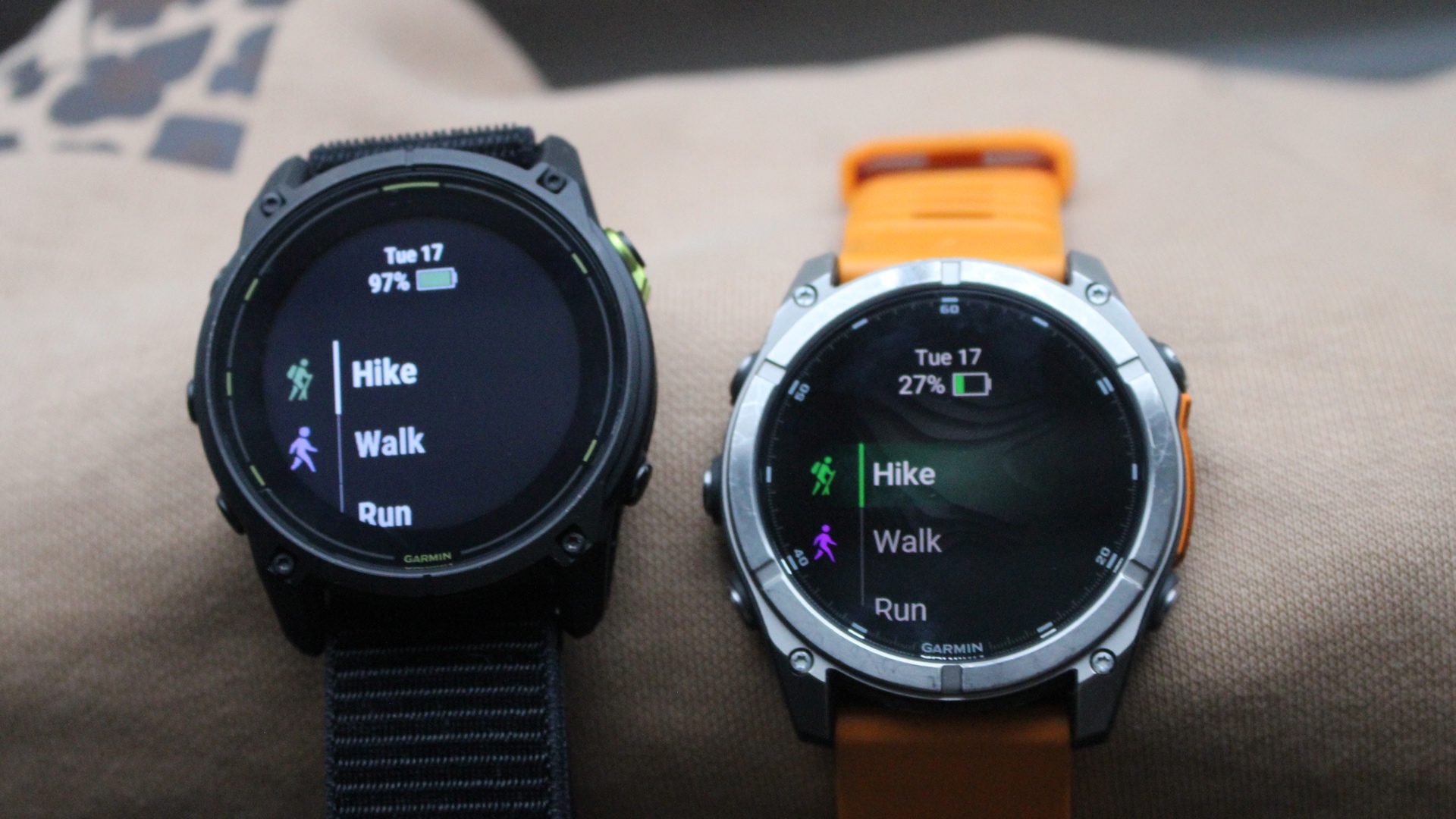
Garmin rarely divulges into the hardware that keeps things running smoothly on its watches, but rest assured, the Fenix 8 and Enduro 3 run nice and slick. Both run on Garmin’s latest operating system. That gives you access to a reworked interface that puts apps and smart features much closer to the workout tracking modes.
Both have 32GB of memory giving you a good amount of room to store things like music, apps, maps, and workouts. Performance-wise there are no complaints when moving around menu screens, launching apps, and waiting for a GPS signal to lock on.
In terms of battery life, we’ve had the 51mm Fenix 8 AMOLED to compare to the Enduro 3 and we’d say battery life has been excellent on both. When using the Fenix 8 AMOLED with the screen set to always-on it can get to up to 13 days. If you don’t keep the screen on at all times it can go up to 29 days. The solar power Fenix 8 can offer 30 days in smartwatch mode The Enduro 3 in contrast can last 36 days in smartwatch mode or 90 days when you fully put its solar powers to optimal use.
When it’s time to put the GPS tracking to good use, the Enduro 3 offers significantly more battery life than the Fenix 8 AMOLED and the same-size Fenix 8 solar model. If you’re just using the standard GPS mode the Enduro 3 offers 120 hours compared to 84 hours on the 51mm Fenix 8 AMOLED or 95 hours on the Fenix 8 solar. When you opt for the best GPS accuracy mode, it’s up to 60 hours on the Enduro 3 versus up to 62 hours on the Fenix 8 AMOLED or 52 hours on the Fenix 8 solar.
Our testing showed that the Enduro 3 pushed closer to a month than the 51mm Fenix 8, but both put in a very good showing. You’re certainly not getting shortchanged with either watch.
Garmin Fenix 8 vs Enduro 3: Which should you buy?
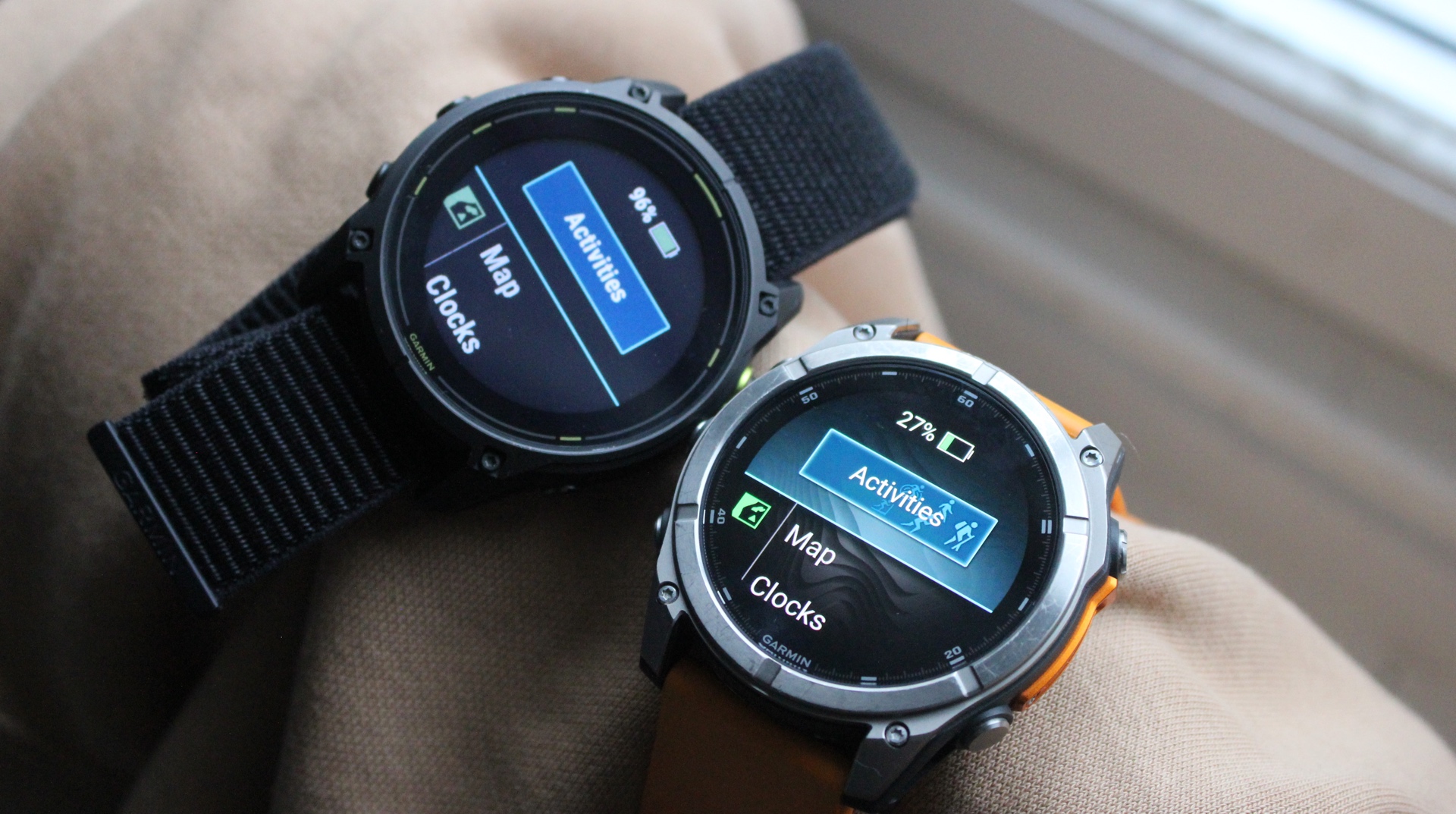
We’ll start by saying that these are two of the best watches you can take on an adventure. They’ve got rugged, tough designs, high-quality screens, and offer plenty of battery life. Crucially, they deliver on aspects like GPS accuracy, offer some of the best mapping and navigation support you can find on a sports watch and there’s no shortage of features to tap into inside and outside of your adventuring.
If you’re looking for the best value option, go for the Enduro 3. At its core, it has all of the great Fenix 8 qualities for less money. It might not have an AMOLED screen or some of Garmin’s new voice-enabled smarts, but if you care about having access to Garmin’s best features and getting more battery life in between charges, the Enduro 3 will give you that.
If you like the idea of an outdoor watch that feels more like a smartwatch and arguably offers the best mix of those features outside of something like the Apple Watch Ultra 2, then go for the Fenix 8. It’s a fantastic watch with all you could want and more and still manages to deliver great battery life whichever model you go for, and that includes the AMOLED version.


